Creating stunning wire flower arrangements doesn’t have to drain your wallet.
Whether you’re planning a wedding centerpiece, home decor, or a thoughtful gift, wire flowers offer a unique blend of industrial charm and delicate beauty that can last forever.
This guide will show you how to craft eye-catching arrangements using affordable materials like craft wire, beads, and simple tools you might already have at home.
From minimalist single-stem designs to elaborate bouquets, we’ll explore techniques that transform basic wire into botanical art pieces that capture the essence of real flowers while keeping your budget intact.
Basic Techniques for Wire Flower Making
1. Basic Loop Technique
- Start with a piece of wire (20-24 gauge is ideal for petals)
- Create a small loop at one end using round-nose pliers
- Shape the loop into a teardrop or petal shape using flat-nose pliers
- Create multiple loops of varying sizes for different petal layers
2. Stem Formation
- Use heavier gauge wire (16-18) for the main stem
- Wrap the finer wire around the stem for stability and texture
- Create small offshoots for leaves and buds using lighter gauge wire
- Secure joins with wire wrapping or floral tape
3. Petal Assembly
- Start from the center, creating the smallest petals first
- Attach each petal to the main stem by wrapping the wire base
- Layer petals outward, gradually increasing size
- Vary petal angles for a natural look
- Secure each layer with fine wire or floral tape
4. Leaf Making
- Create a wire outline in a leaf shape
- Add veining with thinner wire
- Consider using wire mesh or alternative materials for leaf filling
- Attach to stem at natural angles
5. Texturing Techniques
- Use hammering to flatten wire for broader petals
- Create zigzag patterns for texture
- Twist multiple wires together for interesting effects
- Consider adding beads or crystals for centers
6. Finishing Touches
- Shape petals to desired angles using pliers
- Add subtle bends and curves for realism
- Wrap the exposed wire with floral tape or a thin ribbon
- Consider painting or adding a patina for color
Tips for Success
- Work slowly and plan your design
- Keep pliers smooth or tape-wrapped to prevent wire scratching
- Make multiples of each component for consistency
- Practice basic shapes before attempting complex flowers
- Maintain proper tension when wrapping wires
- Use reference photos of real flowers for guidance
How to Make Wire Flower
Tools & Materials Required
- Wire (note: thinner gauge recommended for easier handling)
- Pliers
- Dowel (for wrapping petals)
- Vase for display
- Wire cutters (implied)
Step-by-Step Process of Making Wire Flowers
1. Creating a Basic Flower Structure
-
- Cut wire to length (recommend measuring rather than eyeballing)
- Leave a few inches of wire at the end for the stem
- Use dowel as a guide for consistent petal size
2. Forming Petals
-
- Wrap the wire around the dowel
- Leave a small length free for securing
- Create 5 petals per flower
- Twist after each wrap to lock the petal shape
- Space petals evenly around center
3. Securing the Flower
-
- Use a shorter wire end to weave through all 5 petals
- This creates the flower center
- Twist the wire at the base to secure the structure
- Shape petals with pliers for natural movement
- Create asymmetrical curves for a realistic look
4. Creating Leaves (Eucalyptus-style)
-
- Make consecutive loops with wire
- Can make loops in the same direction initially
- Use pliers to twist and alternate directions afterward
- Shape for natural leaf appearance
5. Assembly Tips
-
- If stems are too short, extend by twisting additional wire
- Arrange flowers at different heights
- Rotate pieces for a balanced composition
- Add leaves between flowers for fullness
6. Final Styling
-
- Place in vase
- Adjust flower positions for the desired look
- Ensure balanced distribution
- Create dimension through varying heights
An Approximate Cost Required for DIY Wire Flower
| Category | Item | Cost Range ($) | Notes |
|---|---|---|---|
| Basic Supplies | Craft Wire Multi-Pack | ||
| – 18-22 gauge (petals/leaves) | 8-12 | ||
| – 16 gauge (stems) | 6-8 | ||
| Total Wire Cost | 14-20 | ||
| Wire Cutters | 8-12 | ||
| Round-Nose Pliers | 6-10 | ||
| Flat-Nose Pliers | 6-10 | ||
| Tool Cost | 20-32 | One-time investment | |
| Wooden Dowel | 2-4 | For shaping petals | |
| Minimum Starting Cost | 36-56 | ||
| Optional Enhancements | Decorative Elements | ||
| – Floral Tape | 3-5 | ||
| – Colored Wire | 8-12 | ||
| – Beads (flower centers) | 4-6 | ||
| Finishing Materials | |||
| – Wire Brush (texturing) | 5-7 | ||
| – Spray Paint/Sealant | 6-8 | ||
| Cost per Arrangement | Small Arrangement (3-5 flowers) | 5-8 | Approximate |
| Medium Arrangement (6-10 flowers) | 10-15 | Approximate | |
| Large Arrangement (11-15 flowers) | 15-25 | Approximate |
Top Wire Flower Designs to Try Out
1. Simple Daisy
A basic five-petal flower that’s perfect for beginners. It has a round center and straight stem. You can make this in under 30 minutes.
2. Tulip
A cup-shaped flower with six petals. The petals curve inward, and it has one leaf on the stem. It looks elegant and simple.
3. Wildflower
A small, casual flower with 4-5 petals. The petals don’t need to be perfect. This design is fun and quick to make.
4. Rose
A flower with layers of petals that wrap around each other. It starts with a tight center and gets bigger as you add outer petals. You can add small thorns and leaves.
5. Sunflower
A large flower with a big round center. The petals point outward like rays of sun. It has a strong stem and big leaves.
6. Lily
A flower with six pointed petals that curve outward. It has long stamens in the middle and a few leaves on the stem.
7. Peony
A full, round flower with many soft, curved petals. Each petal is slightly different in size. It looks fluffy and full.
8. Chrysanthemum
A round flower with many small petals in circles. The petals overlap to make it look full and round. It has a strong stem.
9. Orchid
A delicate flower with unique petal shapes. It has thin stems and can have multiple blooms. The center has special details.
10. Abstract Flower
A creative design that doesn’t look like a real flower. You can bend the wire however you like. There are no rules – just have fun making it!
How to Customize these Flower Designs
1. Petal Variations
- Adjust petal count (3-12 petals per flower)
- Vary petal sizes within the same flower
- Create layered petals for fullness
- Shape options:
- Round for daisies
- Pointed for lilies
- Ruffled for carnations
- Curved for roses
- Elongated for tulips
2. Texture Techniques
- Hammer wire flat for broader petals
- Create spiral centers
- Add wire wrapping for texture
- Pattern options:
- Twisted wire for detail
- Woven centers
- Zigzag edges
- Coiled elements
3. Structural Modifications
- Height variations (6-24 inches)
- Stem styles:
- Straight traditional
- Curved natural
- Twisted artistic
- Branched for multiple blooms
- Add tendrils or vines
4. Decorative Elements
- Center embellishments:
- Beaded centers
- Wire coils
- Small crystals
- Twisted wire clusters
- Leaf variations:
- Simple oval
- Compound leaves
- Fern-like
- Heart-shaped
5. Color Applications
- Paint options:
- Spray paint
- Acrylic paint
- Patina solutions
- Metallic finishes
- Color schemes:
- Monochromatic
- Complementary
- Seasonal themes
- Ombre effects
6. Arrangement Styles
- Single stem sculptures
- Small bouquets
- Wall hangings
- Wreaths
- Tabletop installations
7. Mixed Media Options
- Combine with:
- Ribbon wrapping
- Paper elements
- Fabric leaves
- String/twine accents
- Wood elements
8. Seasonal Adaptations
- Spring: Light, airy designs
- Summer: Bold, full blooms
- Fall: Adding leaf clusters
- Winter: Minimalist, stark designs
9. Size Variations
- Miniature (1-2 inches)
- Standard (3-4 inches)
- Large statement pieces (5+ inches)
- Mixed size arrangements
10. Special Effects
- Moving elements
- Intertwined stems
- Suspended elements
- Light-catching components
Some Advanced Techniques & Enhancements to Explore
Advanced Petal Construction
- Double-Wire Technique
- Use two wires simultaneously
- Creates stronger, more defined edges
- Allows for complex petal shapes
- Better structure retention
- Layered Petal Method
- Multiple wire gauges per petal
- Inner support structure
- Outer decorative layer
- Creates depth and dimension
Texture Enhancement Techniques
- Wire Weaving
- Cross-weave patterns
- Basketweave centers
- French knitting technique
- Creating mesh-like textures
- Surface Treatments
- Hammering for flat surfaces
- Creating deliberate dents/marks
- Wire brushing for texture
- Adding patina effects
Complex Center Constructions
- Spiral Centers
- Tight coils with graduated sizes
- Multi-layer construction
- Mixed wire gauge spirals
- 3D center effects
- Beaded Elaborations
- Wire-wrapped bead clusters
- Graduated bead sizing
- Mixed material centers
- Intricate stamen effects
Advanced Stem Work
- Multi-Strand Stems
- Braided wire techniques
- Twisted multi-gauge stems
- Incorporated leaf structures
- Branch formations
- Movement Integration
- Flexible joint creation
- Spring-like elements
- Kinetic components
- Balance points
Specialized Finishing Techniques
- Chemical Treatments
- Oxidation processes
- Color patinas
- Metal reactive finishes
- Protective coatings
- Mixed Media Integration
- Resin coating
- Metal leaf application
- Enamel details
- Glass element fusion
Structural Innovations
- Support Systems
- Internal frameworks
- Hidden supports
- Balance mechanisms
- Weight distribution
- Connection Methods
- Soldered joints
- Wire wrapping locks
- Mechanical connections
- Removable elements
Environmental Effects
- Weather-Resistant Treatments
- Rust prevention
- UV protection
- Outdoor sealants
- Flexible coating systems
Installation Techniques
- Mounting Systems
- Wall anchors
- Hanging mechanisms
- Stand-alone bases
- Adjustable positions
Professional Tools & Equipment
- Advanced Tools
- Wire jigs
- Specialized pliers
- Metal forming tools
- Micro torches
Documentation & Planning
- Technical Drawing
- Scale drawings
- Pattern creation
- Assembly guides
- Component lists
Best Design Ideas & Inspirations to Follow
| Category | Subcategory | Examples/Details |
|---|---|---|
| Botanical Inspirations | Classic Flower Designs | English Roses, Peonies, Sunflowers, Lilies, Wildflowers |
| Modern Abstract Interpretations | Minimalist single-line flowers, Geometric patterns, Deconstructed blooms, Wire outline sculptures | |
| Theme-Based Collections | Seasonal Designs | Spring: Cherry blossoms, tulips; Summer: Dahlias, daisies; Fall: Chrysanthemums; Winter: Bare branches, berries |
| Special Occasions | Wedding bouquets, Holiday decorations, Anniversary gifts, Home décor pieces | |
| Installation Ideas | Wall Art | Living wall interpretations, 3D flower murals, Shadow-casting designs, Frame-mounted arrangements |
| Hanging Pieces | Suspended gardens, Mobile-style arrangements, Window displays, Ceiling installations | |
| Functional Art | Practical Applications | Napkin holders, Bookends, Table centerpieces, Light fixtures, Photo holders |
| Scale Variations | Size-Based Designs | Micro sculptures (under 2 inches), Desktop sizes (4-8 inches), Statement pieces (12+ inches), Room-filling installations |
| Cultural Influences | Global Inspirations | Japanese Ikebana, Victorian wire art, Art Nouveau curves, Celtic knots, Mandala patterns |
| Mixed Media Combinations | Material Pairings | Wire + glass beads, Metal + wood bases, Wire + fabric elements, Combined metal types |
| Environmental Themes | Nature-Inspired | Garden ecosystems, Climbing vines, Forest floor scenes, Underwater landscapes |
| Color Schemes | Palette Ideas | Metallic combinations, Painted gradients, Natural patinas, Mixed metal tones |
| Display Concepts | Presentation Styles | Floating arrangements, Clustered collections, Linear designs, Cascading effects |
How to Maintain & Preserve Wire Flowers
1. Regular Cleaning Maintenance
- Use a soft, dry microfiber cloth to gently remove accumulated dust from both petals and stems to prevent buildup that could lead to deterioration.
- For stubborn dirt, lightly dampen the cloth with distilled water, being careful not to leave any moisture that could cause rusting.
- Consider using compressed air cans to clean hard-to-reach areas between intricate petal designs and complex wire formations.
- Establish a regular cleaning schedule, ideally every two weeks, to prevent excessive dust accumulation.
2. Protection Against Environmental Factors
- Keep wire flowers away from direct sunlight, as prolonged exposure can cause painted finishes to fade and protective coatings to degrade over time.
- To prevent oxidation and rust formation, avoid placing arrangements in areas with high humidity, such as bathrooms or near kitchen steam.
- Consider displaying pieces under glass domes or in enclosed cases if they’re particularly delicate or in high-traffic areas.
- Maintain consistent room temperature and avoid extreme fluctuations affecting wire tension.
3. Handling & Storage Guidelines
- Always handle wire flowers by their sturdy stem bases rather than delicate petals to prevent deformation.
- When rearranging, use gentle movements to avoid stressing wire joints and connections.
- Store unused pieces in acid-free tissue paper to prevent scratching and tangling.
- For long-term storage, use sturdy boxes with individual compartments lined with soft material.
- Label storage containers with arrangement details and special care instructions.
4. Preventive Measures
- Apply clear protective coating or sealant annually to prevent oxidation and maintain finish.
- Check regularly for signs of wire fatigue or stress points that might need reinforcement.
- Inspect connections and joints monthly for any loosening that requires adjustment.
- Document original arrangement patterns with photos to maintain design integrity
- Keep basic repair supplies (matching wire, pliers) readily available
5. Professional Care Recommendations
- Consider professional cleaning for complex or valuable pieces every 6-12 months.
- Have intricate arrangements professionally resealed every few years
- Document any professional treatments or repairs for future reference
- Maintain relationships with wire artists who can provide expert maintenance
6. Surface Protection
- Apply specialized metal wax annually to maintain shine and protect against tarnishing.
- Use appropriate metal cleaners specific to your wire type (copper, steel, aluminum)
- Reapply protective finishes when signs of wear become visible
- Keep detailed records of products used and application dates
7. Structural Maintenance
- Regularly check for signs of metal fatigue or stress points
- Reinforce weak areas before they become problematic
- Maintain proper balance and weight distribution in arrangements
- Address any bent or misshapen elements promptly to prevent permanent deformation
8. Display Area Maintenance
- Keep display surfaces clean and stable
- Use appropriate bases or stands that provide adequate support
- Ensure proper ventilation in display areas
- Consider using museum-grade display cases for valuable pieces
9. Long-Term Preservation
- Create detailed documentation of original designs and construction methods
- Photograph arrangements from multiple angles for reference
- Maintain a maintenance log recording all cleaning and repair activities
- Store original design templates and pattern instructions safely
10. Emergency Care Guidelines
- Develop a quick-response plan for accidental damage
- Keep basic repair materials readily available
- Document any emergency repairs for professional follow-up
- Create a list of professional restorers specializing in wire art
11. Transportation Safety
- Use custom-fitted boxes or cases for moving arrangements
- Provide adequate cushioning and support during transport
- Label containers clearly with handling instructions
- Consider professional art shipping services for valuable pieces
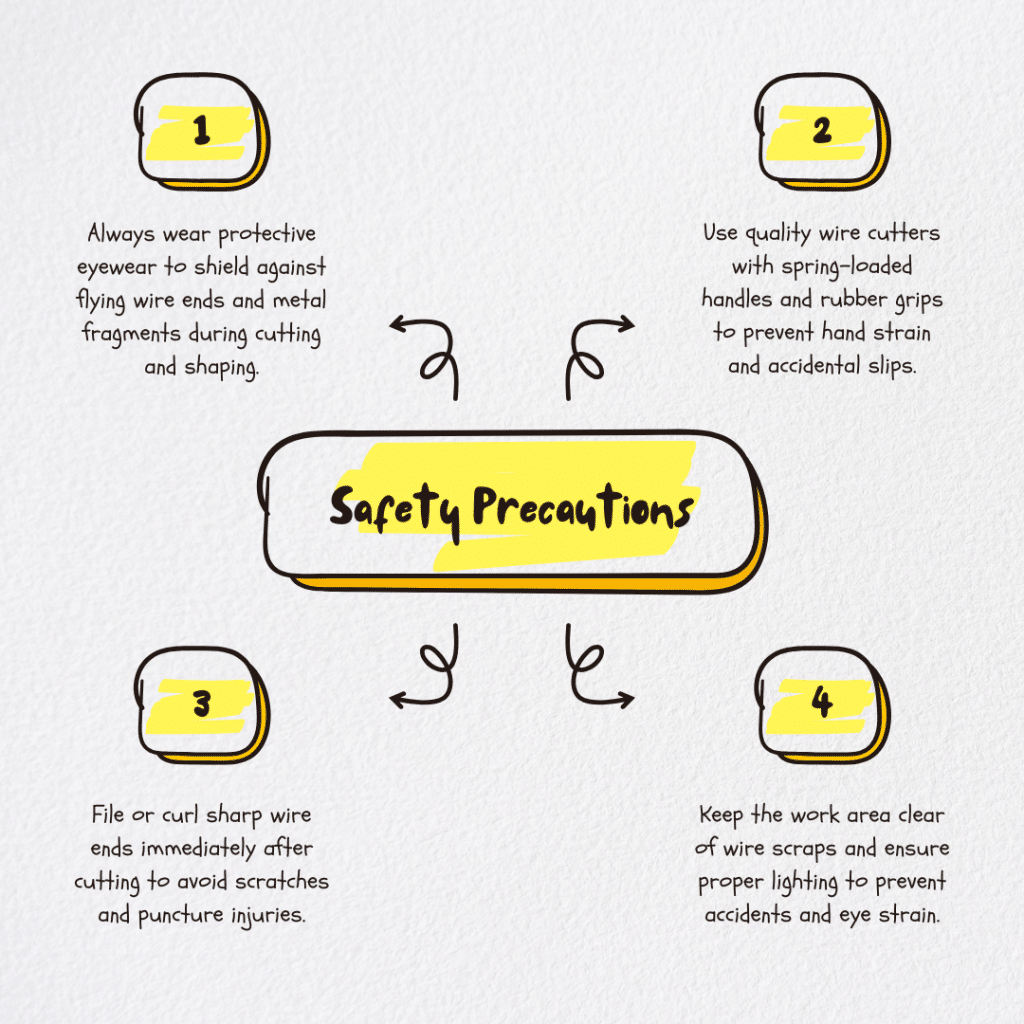
Conclusion
Wire flower arrangements offer an amazing blend of artistry and sustainability, proving that beauty doesn’t need to wither or break the bank.
With basic tools, some creative spirit, and the techniques we’ve explored, you can craft lasting botanical sculptures that bring joy for years to come.
Whether you’re drawn to minimalist single stems or elaborate bouquets, remember that each bend and twist in your wire adds character to your creation.
Start with simple designs, experiment with different techniques, and don’t be afraid to develop your unique style.
As you master these basics, you’ll discover that wire flowers aren’t just craft projects – they’re timeless pieces of art that tell your creative story.

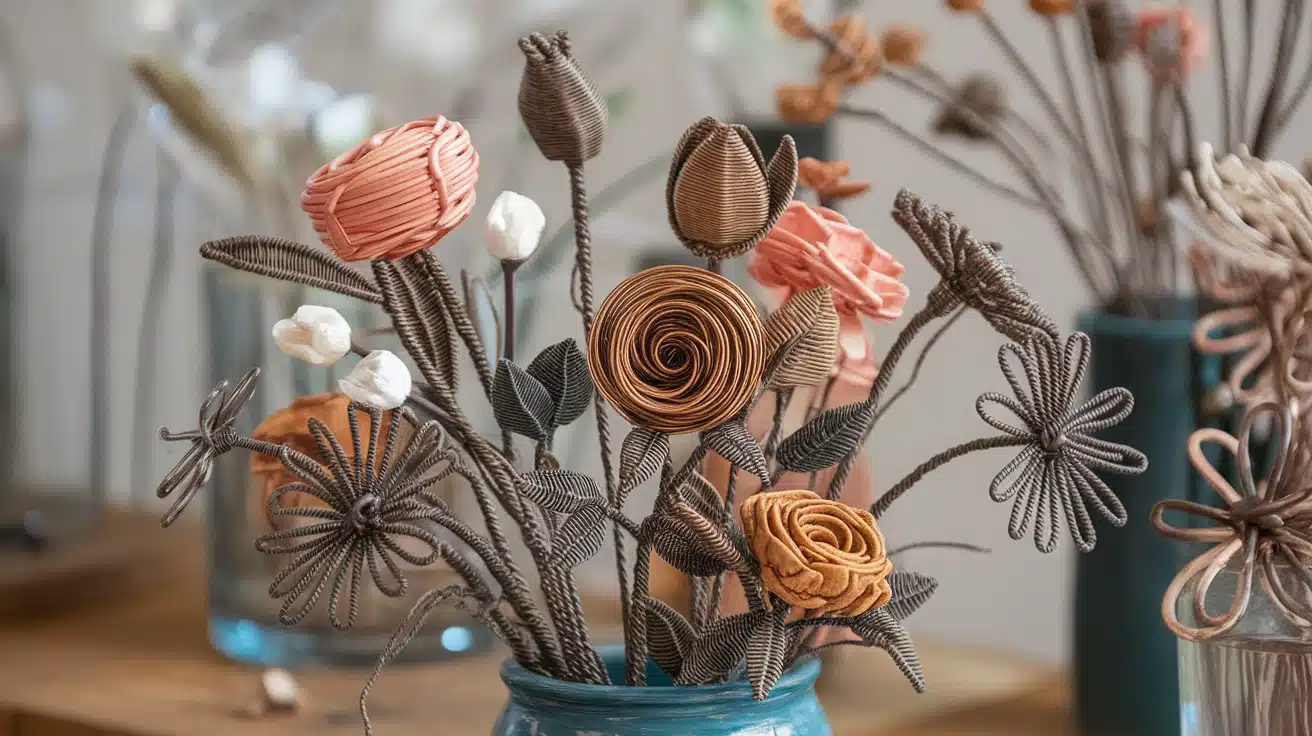

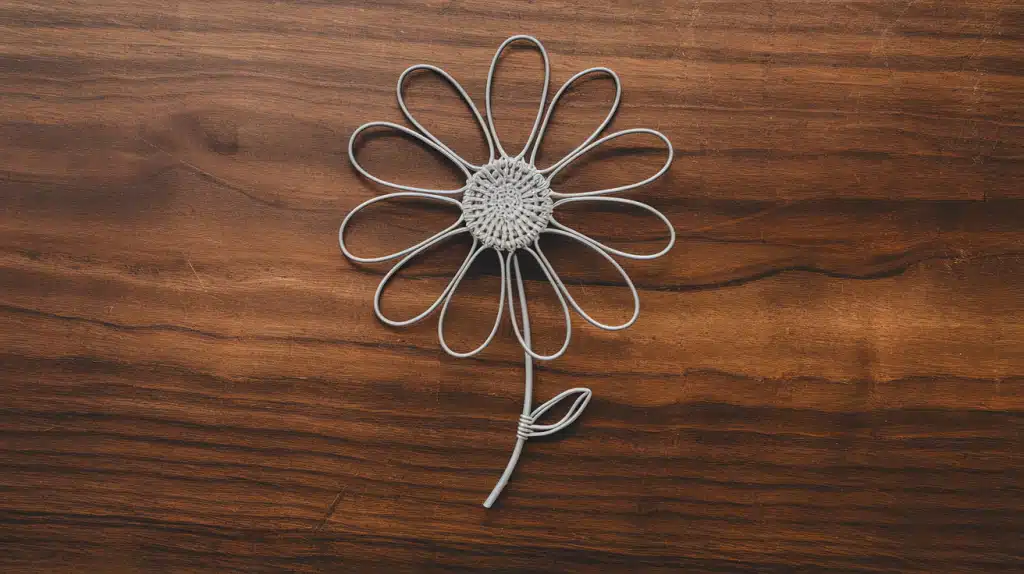
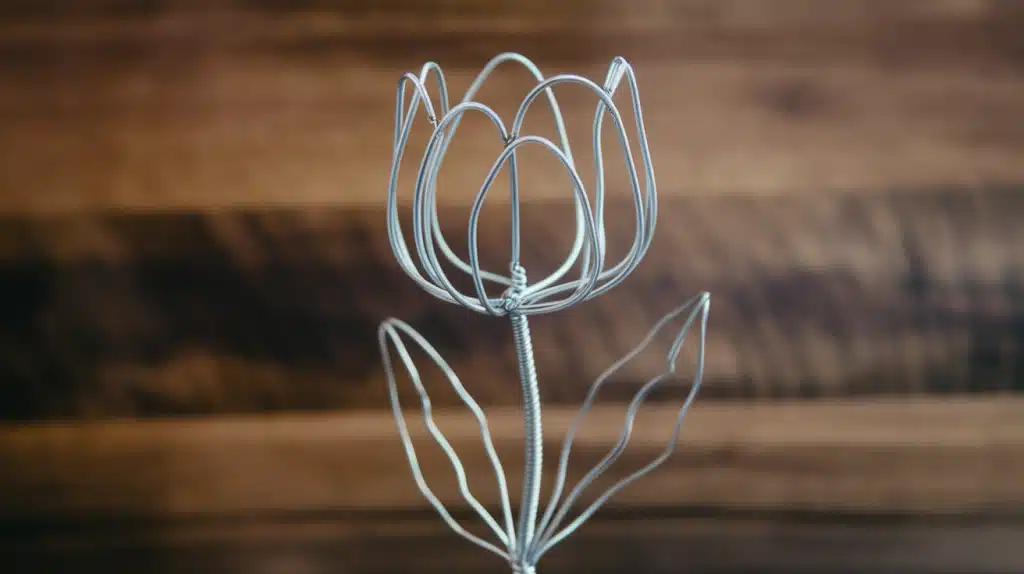
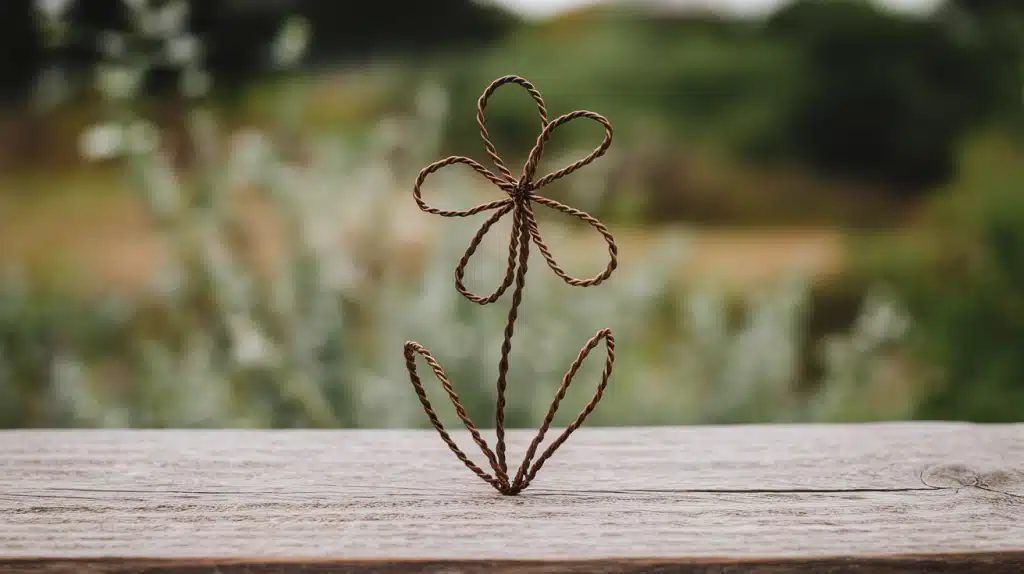

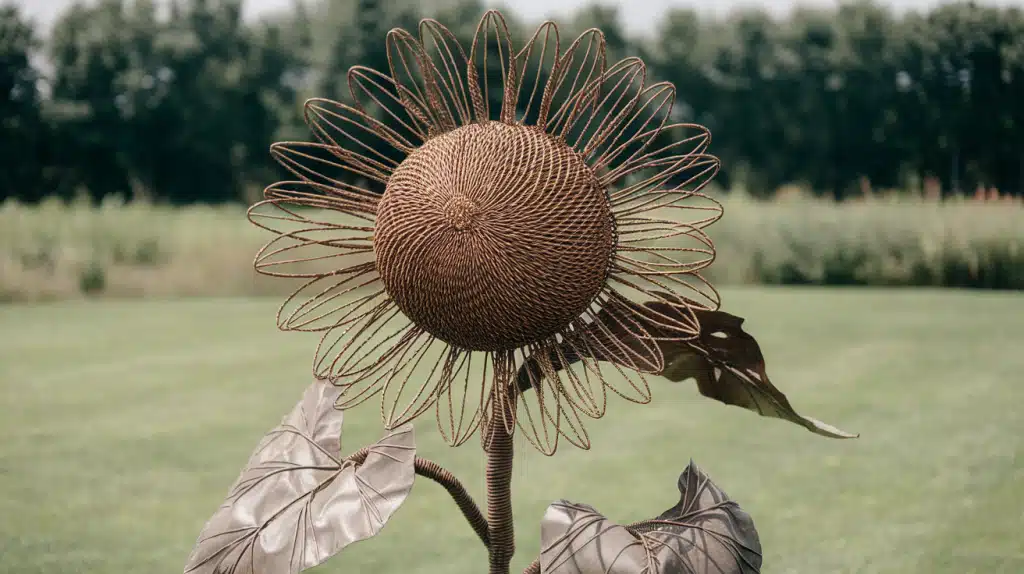

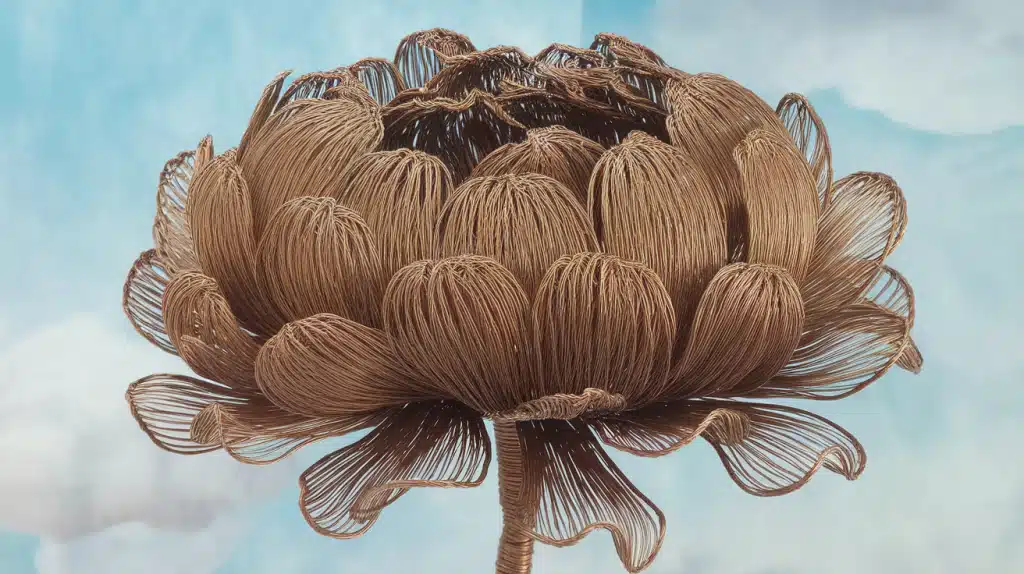
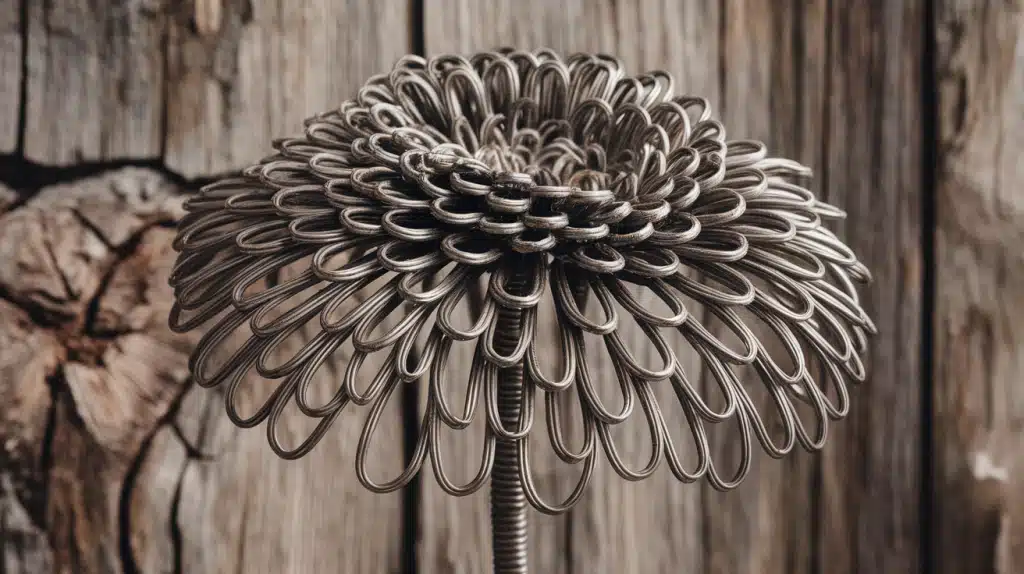
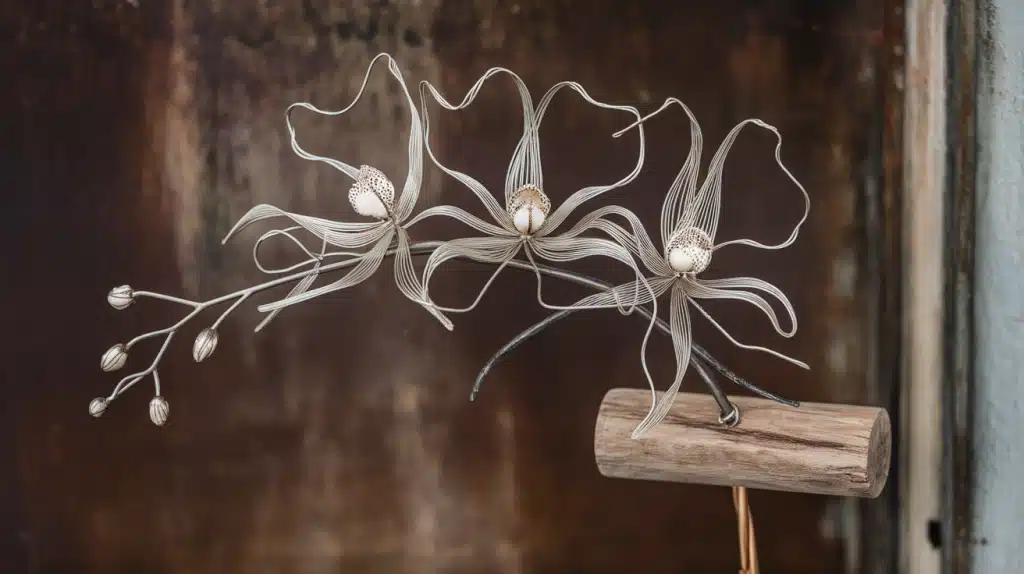
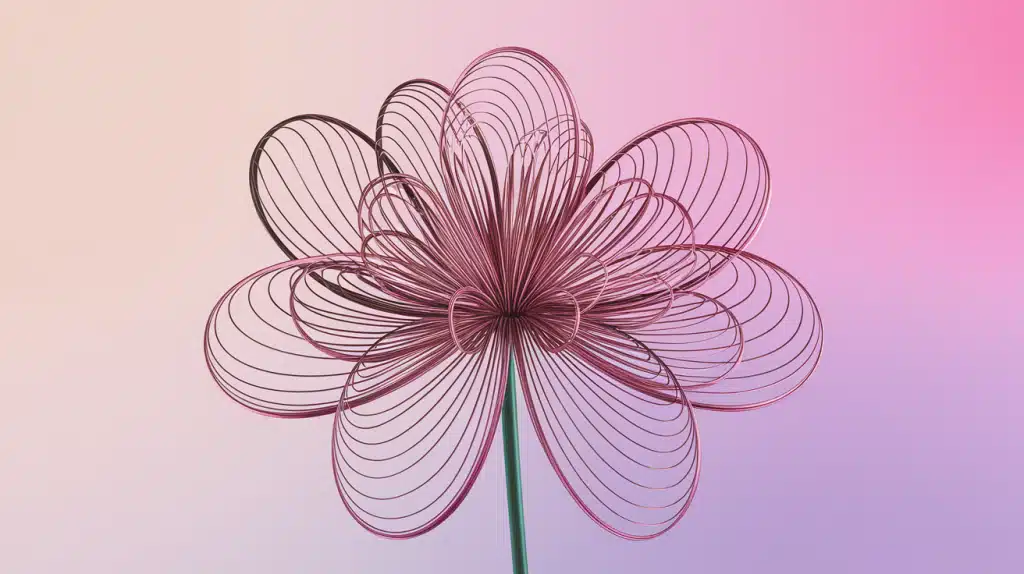
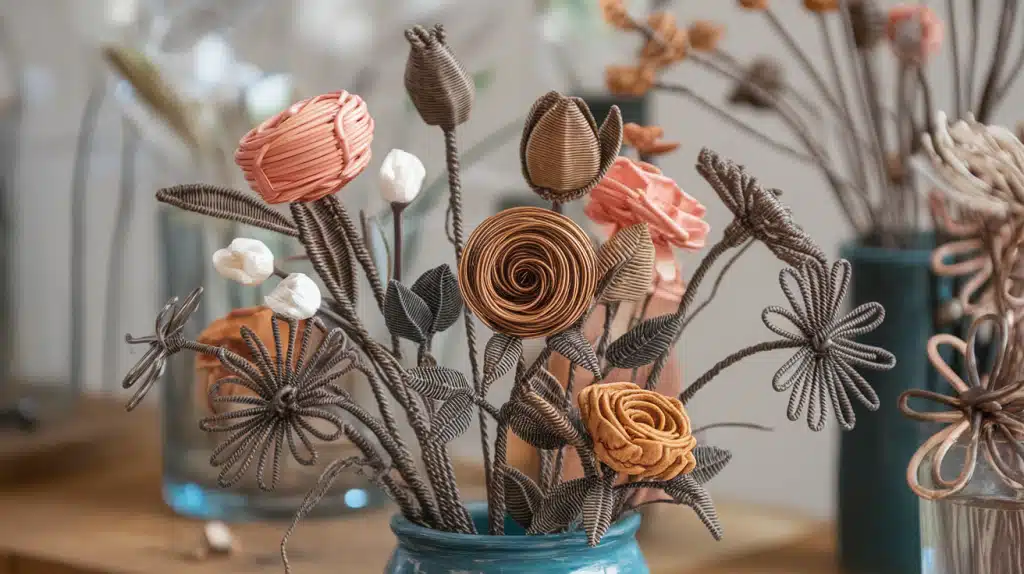






One Comment
vavada вход: вавада – vavada вход